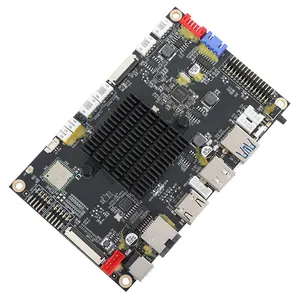
All-in-One Design Computer Pcba Boards Development For Tablet PC Integrated Circuit In Communication And Telecommunications



















The realm of Linux development boards is a dynamic field that caters to a myriad of applications, from hobbyist projects to sophisticated industrial solutions. These boards serve as the backbone for a variety of development needs, offering a flexible platform for innovation and design.
Linux dev boards come in various configurations, each tailored to specific requirements. The embedded Linux development board is a popular choice for integrating into machinery or gadgets, providing smart capabilities and connectivity. For those seeking advanced processing power and versatility, the arm Linux development board is a prime selection, supporting both Linux and Windows 10 environments. These boards are instrumental in driving progress across sectors such as automation, IoT, and robotics.
At the core of these boards are robust materials and components that ensure reliability and longevity. The evaluation board Linux systems are designed with a focus on enabling developers to test and iterate their designs efficiently. High-grade PCB materials coupled with powerful processors like the Allwinner D1 development board chipsets provide the necessary computing power for complex tasks.
The advantages of using a Linux development board are manifold. They offer an open-source environment, which fosters a collaborative approach to development. Boards such as the Wandboard Linux and Wandboard Yocto provide communities with extensive support and customization options. Additionally, the adaptability of these boards to various ecosystems, like the Teensy 4.1 Linux, makes them a go-to for developers seeking a board that can handle a range of programming and project requirements.
Selecting the appropriate Linux development board requires consideration of factors such as processing power, connectivity options, and compatibility with desired peripherals. For instance, the ZedBoard Linux is renowned for its FPGA capabilities, making it suitable for projects that require programmable gate arrays. Meanwhile, the Intel Galileo Gen 2 Linux board is well-suited for those who prioritize compatibility with a wide range of shields and modules.
In conclusion, Linux development boards are a cornerstone in the world of technology development, offering a plethora of options for professionals and enthusiasts alike. Whether it's for a simple DIY project or a complex industrial application, there is a Linux dev board out there to meet the challenge. By understanding the diverse offerings and their respective advantages, developers can harness the full potential of these powerful platforms.